Franco Scaglione, “My Father” His Life in the Words of His Daughter Giovanna
As told to Robert Little, Renzo Carbonaro, Vladimir Pajevic and Ulrich Zensen
Copyright: 8 November 2017 All World Rights Reserved
Republished with permissions with changes to suit the format of VeloceToday.com
Part VII: Wool Threads and Scotch Tape…
“Aerodynamic Fluidity”
An internationally acclaimed graphic artist was once quoted as saying:
“I am going for a level of perfection that is only mine… Most of the pleasure is in getting the last little piece perfect.”
Such a quotation could easily have been applied to Franco Scaglione’s professional standards.
While not everyone will enjoy and appreciate all of his individual design accomplishments, his achievement in the reduction of coefficient of drag, the elimination of air friction or ‘slipperiness’ rates him in the pantheon of greatness…well beyond the achievements his contemporaries.
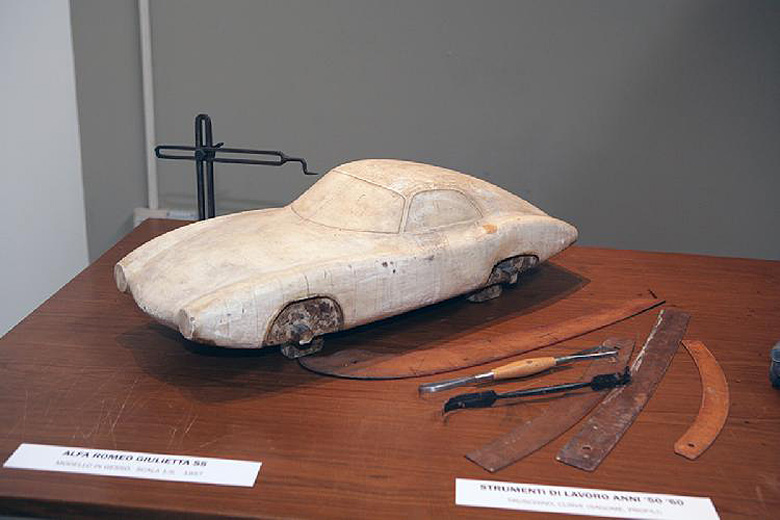
The actual model created by Franco Scaglione in 1/24th scale along with modelling tools he probably used in the period. Image courtesy of Gary Kaberle
Scaglione returned to his hometown of Florence in 1934 and entered the University of Florence, earning a degree in Aerodynamic Engineering in 1937. Only one or two other individuals practicing the art of automotive design in the world during the 1950’s and early 1960’s had the training and substantial aerodynamic engineering experience to equal that of Mr. Scaglione.
Giovanna comments on the early test of an Alfa Romeo Sprint Speciale engineering prototype:
“…all of his standards were achieved without the use of a ‘galleria del vento’…a wind tunnel. The aerodynamic tests of Sprint Speciale were accomplished in this simple, but equally effective way: woolen threads, attached with sticky scotch tape all along the sideboard, hood, and so on. Another car with a cameraman flanked the one in the test and took photographs and video footage when a pre-determined speed was reached for a careful study of how the wool threads reacted.
“One could notice immediately where vortexes were created that could disturb the aerodynamics of the machine. As you can see, woolen threads are absolutely aligned with the machine, except in small points near the wheels. It was a good experience with great value.”
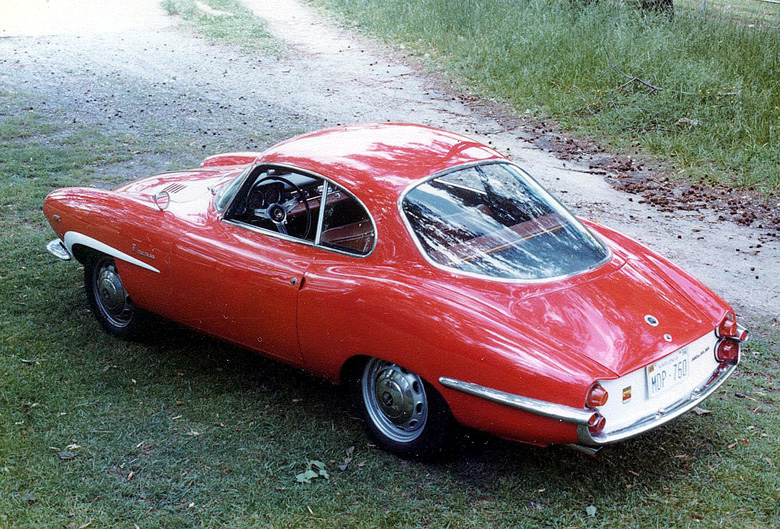
In addition to being ultra-aerodynamic, the Alfa SS was like driving in a fishbowl; no matter where you went, people stared. Photo by Pete Vack
Consider the words of famous Alfa Romeo test driver Teodoro Zeccoli, writing a note to Giovanna Scaglione concerning the superiority of the T 33 Stradale design upon its very first aerodynamic test at the Balocco test track and his personal appreciation of her father Franco:
“I worked as a test driver and I have to say that there was no need for aerodynamic modifications from the original design.
“I was more impressed by the safety in designing and handling of the car without the need for testing in the wind tunnel.
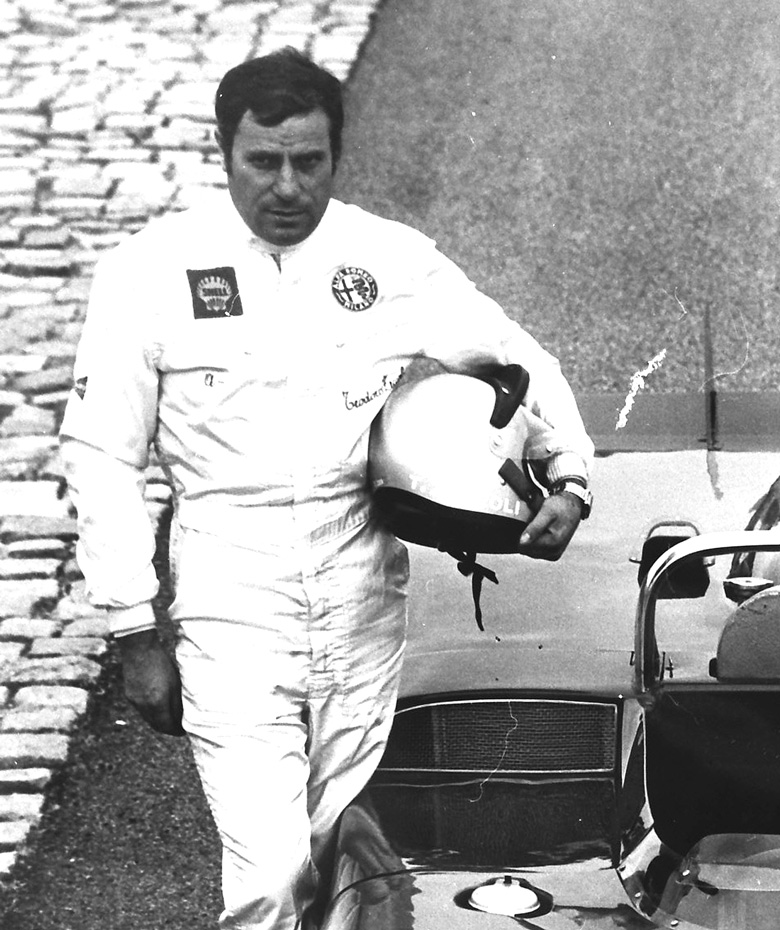
Teo Zeccoli testing an Alfa T33. Courtesy Zeccoli collection. For the full story about Zeccoli, click on photo.
“From the first test on Balocco track with wool threads, and (we discovered this fact) right away…by guiding it through the conclusion of the test (project), it was completely neutral and also very fast.
“Your father was a delightful person and I was working (with him) with enthusiasm and I must acknowledge the merit of him teaching me so many aerodynamic secrets.
“With him I can only say that I was always working extremely well.”
To find out more about the Alfa 33 Stradale’s soul, let’s mention what Henry Wessels III, the first private owner of a Stradale said in an article of Automobilismo d’Epoca:
“At that time there were no speed limits in Italy and the police stopped you only for curiosity. But most often they made gestures to say ‘Forward, from the gas!
“Once, on the highway to Venice, I ran for four kilometers at 10,000 rpm in sixth gear. The speedometer indicated 290 km /h (about 175 mph). Incredibly, under 240 km/h there was a lot of mechanical noise and when surpassing the 260 mark the intense noise in the passenger compartment disappeared.
“The car was incredibly stable, even in the case of a transverse wind, it continued to travel beautifully straight ”
The wool threads and scotch tape did not lie!
Read Part 1
Read Part 2
Read Part 3
Read Part 4
Read Part 5
Read Part 6

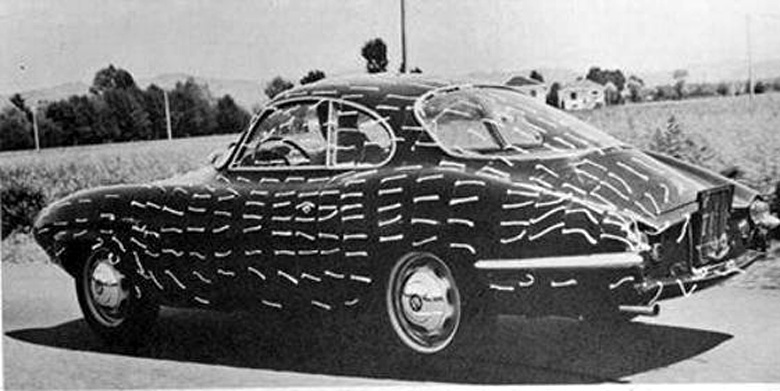
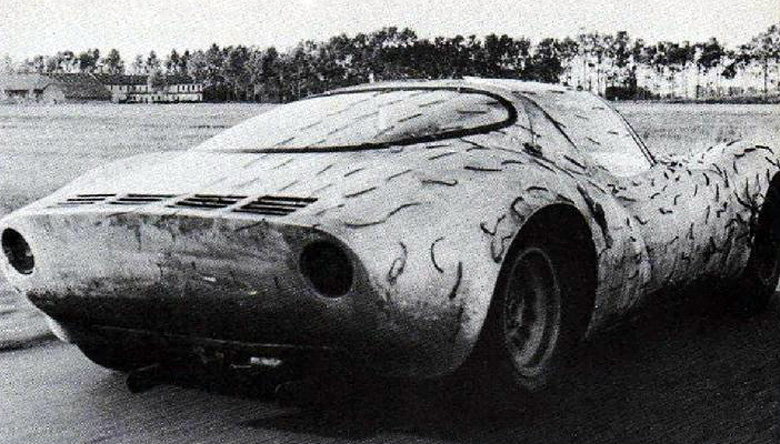
Ahh, the wonderful work of a true master!